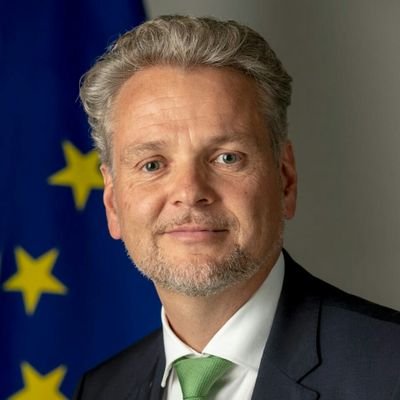Understanding enlargement
Enlargement is one of the EU’s most powerful policy tools. All European citizens benefit from having neighbours that are stable democracies and prosperous market economies. Enlargement is a carefully managed process which helps the transformation of the countries involved, extending peace, stability, prosperity, democracy, human rights and the rule of law across Europe.
The European Union has undergone a number of enlargements since its creation. More and more countries have joined the first six Member States. Today, the EU has 27 Member States.
Past Enlargements
In the beginning, six countries – Belgium, Germany, France, Italy, Luxembourg and the Netherlands – founded the European Coal and Steel Community in 1951, followed by the European Economic Community and the European Atomic Energy Community in 1957.
Five enlargements have followed since then:
- In 1973, Denmark, Ireland and the United Kingdom joined the European Union.
- In 1981, Greece became a Member State.
- In 1986, Spain and Portugal became members.
- In 1995, Austria, Finland and Sweden joined the EU.
- In 2004, the EU underwent a historic enlargement to 10 countries of Central and Eastern Europe and the Mediterranean: Czech Republic, Estonia, Cyprus, Latvia, Lithuania, Hungary, Malta, Poland, Slovakia and Slovenia. It was a unique, historic enlargement which signified the re-unification of Europe after decades of division by an Iron Curtain.
- In 2007, Romania and Bulgaria became members.
- In 2013, Croatia became a Member State.
Future prospects
All the Western Balkans have a European perspective.
Albania, the Republic of North Macedonia, Montenegro, Serbia and Turkey are candidate countries, while Bosnia and Herzegovina and Kosovo* are potential candidate countries.
Future enlargements will go at the pace dictated by each country´s performance in meeting the rigorous standards, to ensure the smooth absorption of eventual new members.
Accession process
According to Article 49 of the Treaty on European Union, any European country may apply for membership if it respects the principles of liberty, democracy, respect for human rights and fundamental freedoms, and the rule of law, principles which are common to the Member States´ (Article 6.1 TEU). Accession, however, can only follow if the given European country fulfils all criteria of accession which were fixed by the European Council in Copenhagen in 1993 and reinforced by the European Council in Madrid in 1995. These criteria are:
- political: stable institutions guaranteeing democracy, the rule of law, human rights and respect for protection of minorities;
- economic: a functioning market economy and the capacity to cope with competition and market forces in the EU;
- the capacity to take on the obligations of membership, including adherence to the objectives of political, economic and monetary union;
- adoption of the acquis communautaire (the entire European legislation) and its effective implementation through appropriate administrative and judicial structures.
In addition, the EU must be able to absorb new members, so it reserves the right to decide when it will be ready to accept them.
How does a country join the EU
A country that wishes to join the EU submits an application for membership to the Council, which asks the Commission to assess the applicant’s ability to meet the conditions of membership. If the Commission delivers a positive opinion, and the Council unanimously agrees a negotiating mandate, negotiations are formally opened between the candidate and all the member states.
Pre-accession strategy
The pre-accession strategy is designed to prepare the candidate countries for future membership. It encompasses the following frameworks and mechanisms:
- Europe Agreements/Association Agreements/Stabilisation and Association Agreements
- Accession Partnerships/European Partnerships
- Pre-accession assistance
- Co-financing from International Financing Institutions
- Participation in EU Programmes, Agencies and Committees
- National Programme for the adoption of the acquis
- Regular/Progress Reports
- Political Dialogue
Negotiations
The first step in negotiations is the so called “screening”. It is an analytical examination of the acquis. The purpose of screening is to explain the acquis to the candidate countries and, with them, to identify areas where there may be problems to be addressed.
As a basis for launching the actual, technical negotiation process, the Commission establishes a “screening report” for each chapter and each country.
Candidate country submits a negotiating position. The Commission submits to the Council a Draft Common Position (DCP). The Council adopts a common position allowing opening of the chapters.
Negotiating sessions are held at the level of ministers or deputies, i.e. Permanent Representatives for the Member states, and Ambassadors or chief negotiators for the candidates.
Monitoring and review procedure
The Commission keeps duly informed the Council and the Parliament about the candidates´ preparations for membership with help of the so called “Monitoring reports”. They also serve to guide the candidate countries in their preparations.
Peer reviews cover the most problematic issues identified in the Monitoring Reports.
Before envisaged accession, the Commission produces a Comprehensive Monitoring Report. This report serve as a basis to decide on any possible remedial measure to be taken by the Commission in its role as a guardian of the Treaties. Such measures include safeguards, infringement proceedings or financial management measures.
Regular/Progress Reports (review procedure) have the purpose to assess progress achieved by each country in preparation for accession.
The Ratification Process and Accession
Once negotiations are concluded on all chapters the results of the negotiations are incorporated in a draft Accession Treaty, which is agreed between the Council and the acceding countries. This draft Treaty is subsequently submitted to the Commission for its opinion and to the European Parliament for its assent.
After signature, the Accession Treaty is submitted to the Member States and to each acceding country concerned for ratification by them in accordance with their own constitutional procedures. When the ratification process has been concluded and the Treaty takes effect, the candidate becomes a Member State.
Accesion criteria
In 1993, at the Copenhagen European Council, the Union took a decisive step towards the current enlargement, agreeing that “the associated countries in Central and Eastern Europe that so desire shall become members of the European Union.” Concerning the timing, the European Council stated that accession will take place as soon as an associated country is able to assume the obligations of membership by satisfying the economic and political conditions required. At the same time, it defined the membership criteria, which are often referred to as the ‘Copenhagen criteria’.
Copenhagen European Council
Membership criteria require that the candidate country must have achieved:
- stability of institutions guaranteeing democracy, the rule of law, human rights and respect
for and protection of minorities;
- the existence of a functioning market economy as well as the capacity to cope with competitive
pressure and market forces within the Union;
- the ability to take on the obligations of membership including adherence to the aims of political, economic & monetary union.
Madrid European Council
Membership criteria also require that the candidate country must have created the conditions for its integration through the adjustment of its administrative structures, as underlined by the Madrid European Council in December 1995. While it is important that the EU legislation is transposed into national legislation, it is even more important that the legislation is implemented effectively through appropriate administrative and judicial structures.
Stabilisation and Association Process
The Stabilisation and Association Process (SAP) is a part of the enlargement process. It is the framework for the European course of the Western Balkan countries all the way to their future accession.
The Stabilisation and Association Process
The Stabilisation and Association Process (SAP) is the EU’s policy framework for the Western Balkan countries, all the way to their eventual accession.
The partnership between the EU and the Western Balkans is in the interest of all partners: peace, stability, freedom, security and justice, prosperity, quality of life, for the EU and the Western Balkan countries.
The SAP pursues three aims, namely stabilisation and a swift transition to a market economy, the promotion of regional cooperation and the prospect of EU accession. It helps the countries of the region to build their capacity to adopt and implement European standards, including the Community acquis, as well as international standards.
The SAP is based on a progressive partnership, in which the EU offers a mixture of trade concessions (Autonomous Trade Measures), economic and financial assistance (CARDS Programme) and contractual relationships (Stabilisation and Association Agreements). Each country moves forward on the basis of the fulfilment of its commitments in the framework of the SAP. Annual Progress Reports assess the readiness of the Western Balkan countries to move closer to the European Union.
Following the EU Regional Approach for the Western Balkans of 1997, the European Commission set out, in 1999, the rationale for moving to a more ambitious vision for the region’s development – the Stabilisation and Association Process. Its instruments were formulated at the Zagreb summit in November 2000. The Thessaloniki Summit in June 2003 enriched the SAP with elements inspired by the enlargement process, so that it can better meet the new challenges. The Thessaloniki Agenda introduced an array of new instruments to support the reform process in the Western Balkan countries and to bring them closer to the European Union. The most far-reaching of these new instruments are the European Partnerships, inspired by the Accession Partnerships. The first set of European Partnerships was approved in 2004: by identifying short and medium-term priorities which the countries need to address, the European Partnerships will help the Western Balkans countries with their reforms and preparations for future membership.
All the countries of the Western Balkans have the prospect of future membership of the European Union, an objective endorsed by the European Council in Feira in June 2000 and confirmed by the European Council in Thessaloniki in June 2003. The European Council in June 2005 clearly re-confirmed these existing commitments.
In January 2006, the European Commission adopted a Communication on “The Western Balkans on the road to the EU: consolidating stability and raising prosperity”. The Communication assesses progress made since the Thessaloniki Summit and sets out concrete measures to reinforce the EU policy for the Western Balkans and its instruments.


















